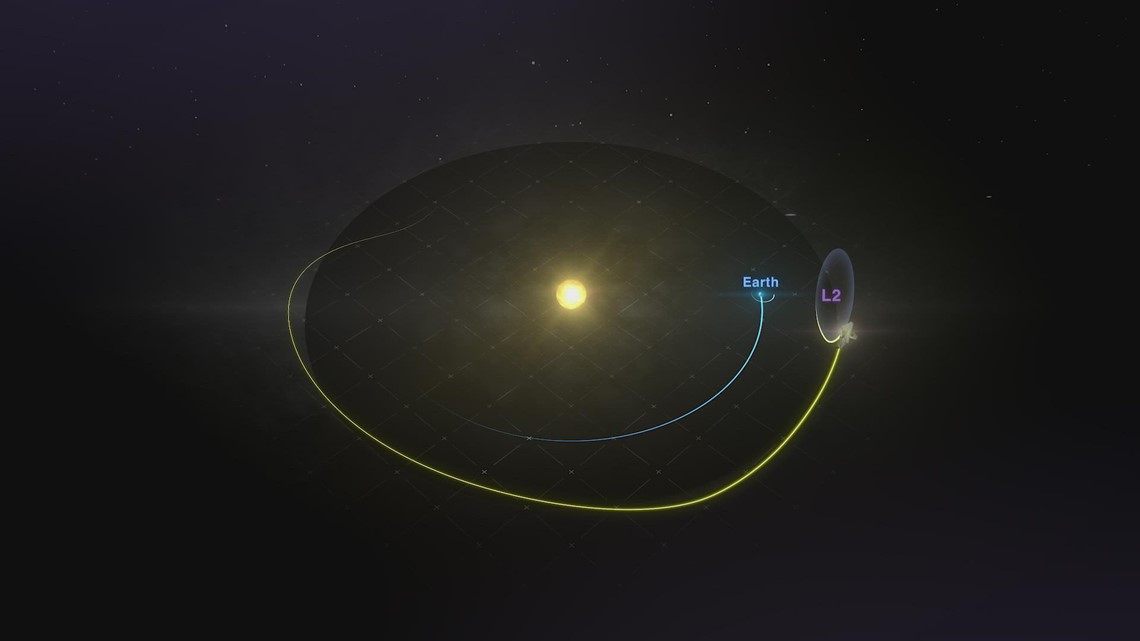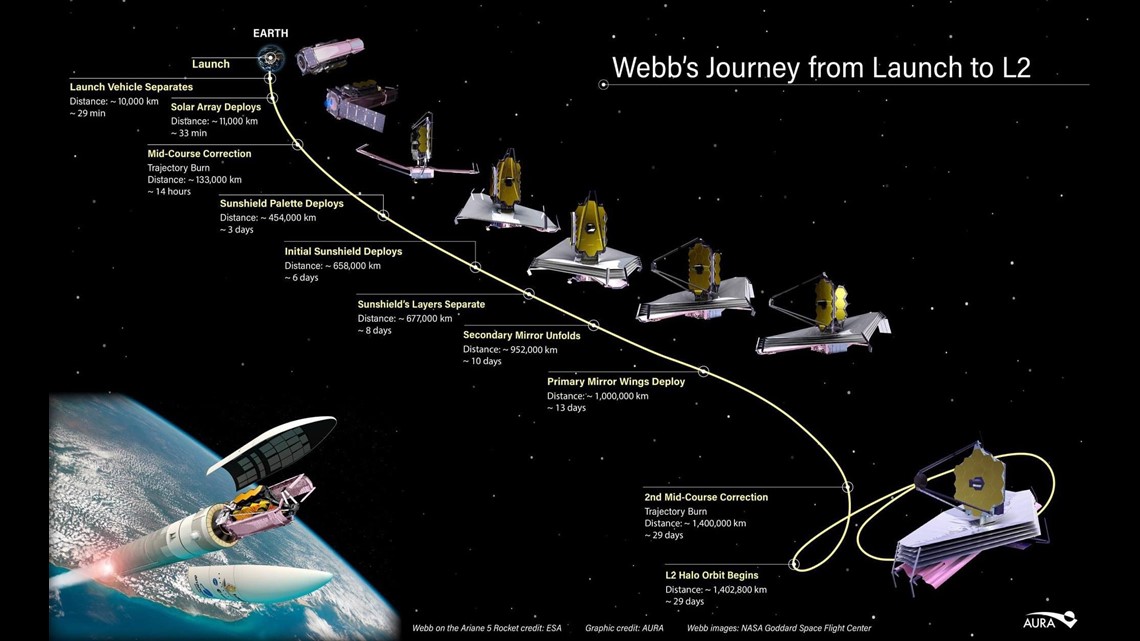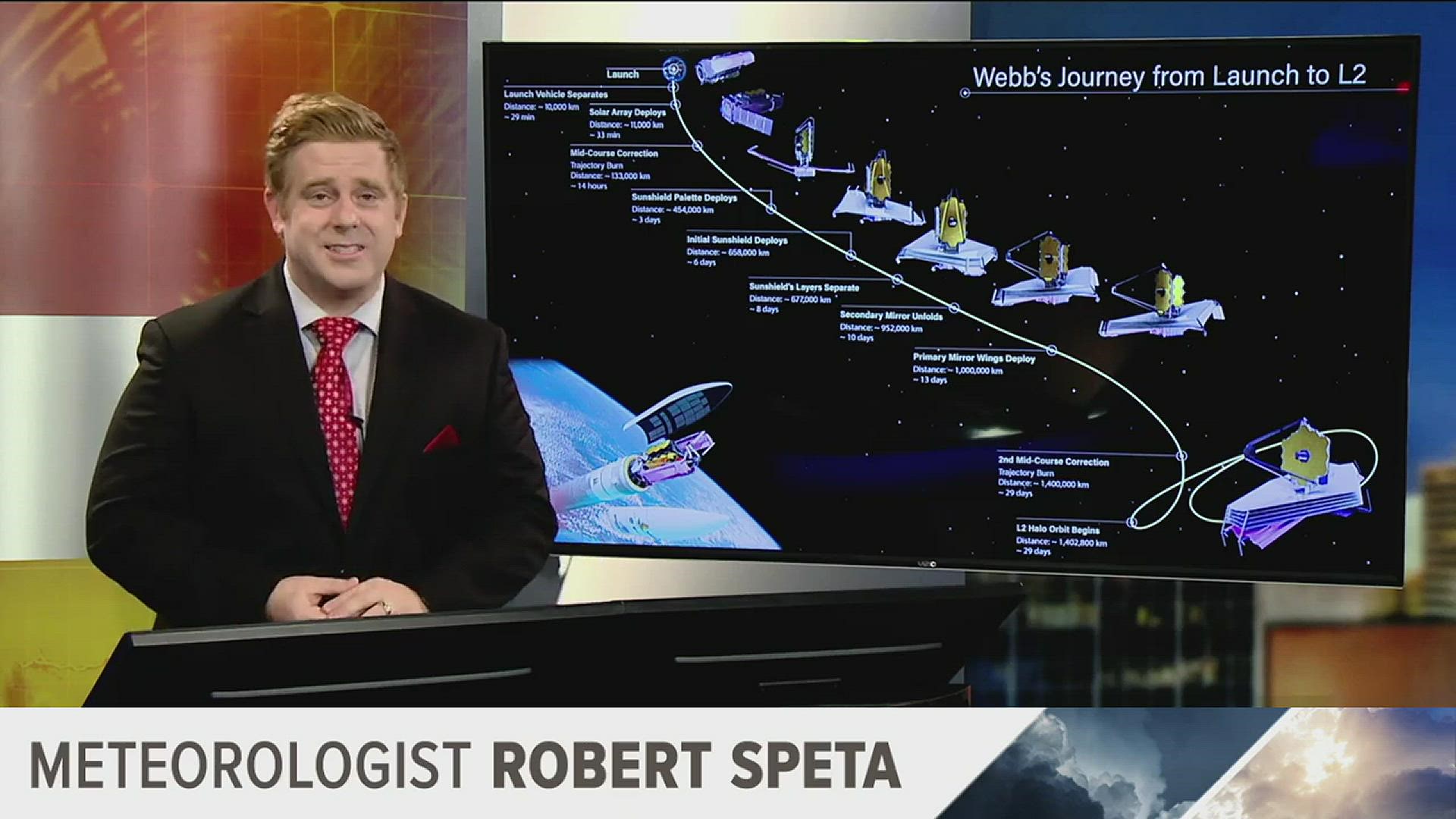JACKSONVILLE, Fla. — The James Webb telescope is heading towards its final orbit now. Unlike its predecessor the Hubble Telescope which was located near Earth, the James Webb will in fact be millions of miles away. At what is called a Lagrange point, it's an area of relatively balanced gravity between earth and the sun in an Orbiting sweet spot.
Bharath Muthyala said “On Monday NASA scientists are going to give it its final correction burn which will put it in an L2 orbit and will remain there for the next 20 years. Where it will give us beautiful pictures.”


This will allow the telescope to see even more and even look back in time up to 13.7 billion years.
This telescope is unique in many other ways too, instead of one mirror it has 18 that were unfolded in space after takeoff, not to mention its large sun shield designed to keep the glare from the sun off the sensitive sensors of the telescope.
To put in perspective the sun-facing side temperatures are expected to be 185 degrees while the cold side will be around -388F.
The James Webb is the biggest telescope launched ever as well. Its primary mirror is 6.6-meter diameter – similar to the size of a Boeing aircraft whereas Hubble is compared to a school bus size. Since it's so huge it needed the biggest rocket to launch into space- Ariane 5 Rocket from ESA was used to launch.
These factors plus some of the most sensitive telescope equipment ever created will allow us to look further than ever before and see in more detail objects in our distant solar system than ever before. Expect more news about discoveries of exo-planets as well and maybe one-day second earth out there.
This whole project is a joint venture of NASA, the Canadian Space Agency and the European Space Agency and developed by scientists from all over the world. The data and images will be shared and researched by scientists all over the world.



